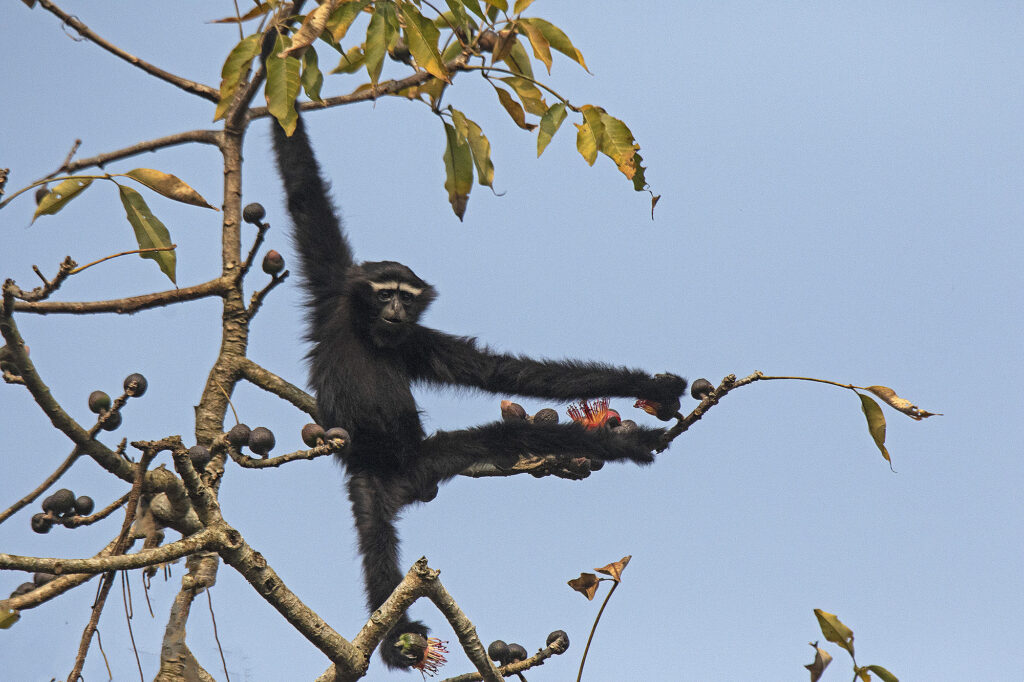
Hoolock Gibbon, The only ape found in India. This is all about the Western Hoolock Gibbon. Couple of years back while in Kaziranga, we just steal one morning to visit the Hollongapar Gibbon Sanctuary an isolated and protected area among the tea gardens and small villages. The name of the sanctuary was derived form its dominant tree species hollong or Dipterocarpus macrocarpus. These trees covers the upper canopy of the forest to give a much needed shelter to the Gibbons. These are the tallest and state tree of Assam and Arunachal Pradesh.

The interesting fact that these apes found only in the seven sisters state in India (Assam, Mizoram, Manipur, Nagaland, Arunachal Pradesh, Nagaland and Tripura). But they are protected only in Hollongapar Gibbon Sanctuary where just 125 individuals left, within 26 groups, as of 2023. In overall Gibbons are most endangered groups of primates on Earth.

They are very much distinct when it comes to male and female. Male has pure black fur with distinctly white eyebrows. While female has brownish fur with a white ring around her face and mouth giving an impression of wearing mask.

We spend incredible moment with these Gibban family. It’s so amazing to watch them manoeuvre the canopy so smoothly and effortlessly. The primates are considered as the nature’s pruner of the forest. They help controlling and shaping the forest canopy. They are primarily fruit eater. They help in tuning the forest by dispersing the undigested fruit seeds.

Like any primates these apes are also quite inquisitive but same time very shy. How we can differentiate other monkeys/ primates from Apes. The most obvious way to tell the difference is absence of tail in Apes. Then their physical structures are also different. In case of monkeys, they are smaller and their chest is narrow while apes are larger and broader shoulders. This helps them swing around the canopy, which others monkeys are not capable of. While some monkeys also have this ability, but most of them are built for running across branches rather than swinging. Another anatomical difference is, Ape has appendix but monkeys don’t have. Apes are generally more intelligent than monkeys and most species of Apes found to use some kind of tools. In a nutshell we can say Apes are one step closure to human in evolution process.

Female Gibbons give birth to single offspring after 7 months of gestation period and it takes 7 years for the offspring to get into adulthood.

Gibbons (Hylobatidae) seem to lack higher cognitive abilities and self-awareness like the great apes (Hominidae) gorillas, orangutans, chimpanzees, and bonobos.

Even if it’s the only ape species in India, it faces the threats include habitat loss, forest fragmentation, and hunting. There were immense efforts done by forest departments, conservation entities and NGOs to save the population of Hoolock Gibbon, still its under threat. As they are canopy dwellers, the fragmentation of the forests forced them to be restricted in very small pockets of the forest.

For Example, The Hollongapar Gibbon Sanctuary is fragmented by Mariani-Dibrugarh single line railway track that goes through the sanctuary, which gives 50 meter gap in the canopy, this is too large for Gibbons to cross.